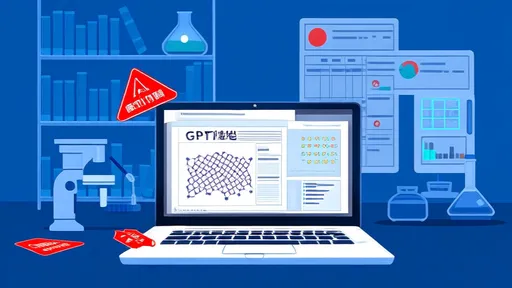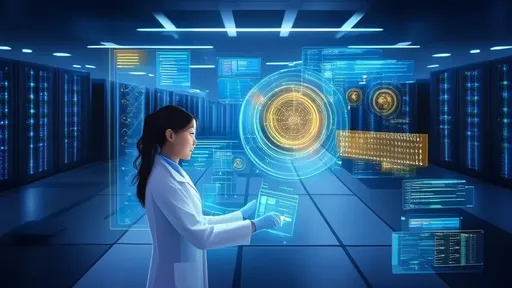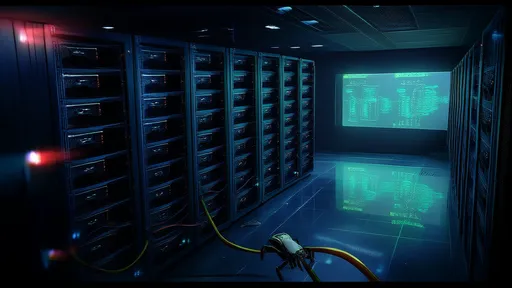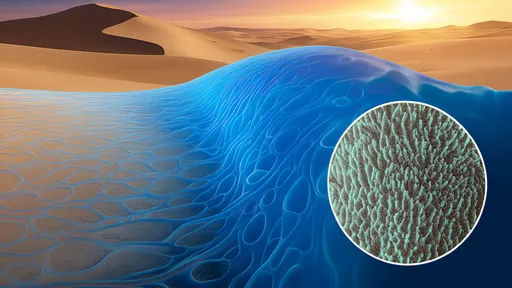The concept of a Digital Twin Ocean is revolutionizing our understanding of marine ecosystems and global ocean currents. By creating a virtual replica of the Earth's oceans, scientists and researchers can now simulate, predict, and analyze oceanic behavior in real time. This breakthrough technology leverages advanced computational models, satellite data, and machine learning to provide unprecedented accuracy in forecasting ocean currents, temperatures, and even potential environmental threats.
At the heart of this innovation lies the ability to process vast amounts of data from multiple sources. Satellites orbiting the Earth continuously capture information about sea surface temperatures, wave heights, and wind patterns. Meanwhile, underwater sensors and autonomous drones collect data from the depths, offering insights into subsurface currents and marine life. By integrating these diverse datasets, the Digital Twin Ocean creates a dynamic, living model that updates in real time, allowing for more precise predictions than ever before.
The implications of this technology extend far beyond academic research. Shipping companies, for instance, can optimize routes to save fuel and reduce emissions by leveraging real-time current predictions. Fisheries can monitor changes in ocean conditions to better manage stocks and protect vulnerable species. Even disaster response teams can use the system to anticipate the spread of oil spills or other pollutants, enabling quicker and more effective interventions.
One of the most exciting aspects of the Digital Twin Ocean is its potential to enhance our understanding of climate change. Oceans play a critical role in regulating the Earth's climate, absorbing vast amounts of heat and carbon dioxide. By modeling how currents distribute these elements, scientists can gain deeper insights into global warming patterns and their long-term effects. This knowledge is invaluable for policymakers seeking to mitigate the impacts of climate change through informed decision-making.
Despite its promise, the development of a fully functional Digital Twin Ocean is not without challenges. Data accuracy remains a persistent issue, as gaps in satellite coverage or sensor malfunctions can lead to incomplete or misleading information. Additionally, the sheer computational power required to process and simulate oceanic behavior at a global scale demands significant investment in infrastructure and expertise. However, as technology continues to advance, these hurdles are gradually being overcome.
Collaboration is key to the success of this ambitious project. Governments, research institutions, and private enterprises around the world are pooling resources and expertise to refine the Digital Twin Ocean. International partnerships ensure that data is shared openly, fostering innovation and accelerating progress. This collective effort underscores the importance of global cooperation in addressing some of the most pressing environmental challenges of our time.
Looking ahead, the Digital Twin Ocean could become an indispensable tool for sustainable ocean management. As the system evolves, it may incorporate predictive capabilities for extreme weather events, such as hurricanes and tsunamis, offering early warnings to vulnerable coastal communities. Furthermore, by simulating different scenarios—such as the impact of melting ice caps or rising sea levels—the technology could help humanity prepare for and adapt to a changing world.
The journey toward a fully realized Digital Twin Ocean is still in its early stages, but the progress made so far is undeniably transformative. By bridging the gap between theoretical models and real-world observations, this technology is unlocking new possibilities for ocean science and conservation. As we continue to refine and expand its capabilities, the Digital Twin Ocean promises to be a cornerstone of our efforts to understand and protect the planet's most vital resource.

By /Jul 2, 2025

By /Jul 2, 2025

By /Jul 2, 2025

By /Jul 2, 2025

By /Jul 2, 2025

By /Jul 2, 2025

By /Jul 2, 2025

By /Jul 2, 2025

By /Jul 2, 2025

By /Jul 2, 2025

By /Jul 2, 2025

By /Jul 2, 2025

By /Jul 2, 2025

By /Jul 2, 2025

By /Jul 2, 2025

By /Jul 2, 2025

By /Jul 2, 2025

By /Jul 2, 2025

By /Jul 2, 2025

By /Jul 2, 2025